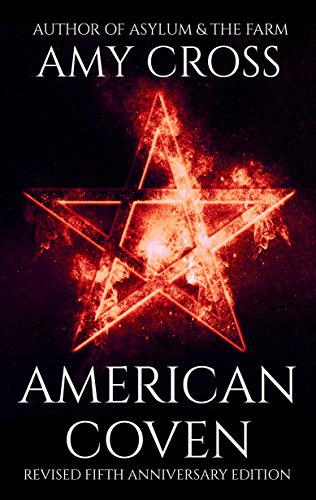Originally published in 1972 Dark Satanic is the first book in Marion Zimmer Bradley's Occult Tales series and the prequel to The Inheritor. Throughout her life Bradley was an incredibly prolific writer and is, of course, better known for both the Darkover and Avalon series. Given the sheer quantity of Bradley's written output, it should come as no surprise that some of her books lack in the quality department.
Anyone familiar with her wider work will be aware, Bradley published a great number of books and short stories that can best be described as 'fragments' or literary experiments, in which she was trialling new plot lines, developing characters and experimenting with new themes. Rather than retaining these fragments in a drawer, Bradley was happy to see them published - in later years most often inside one of her short story collections and anthologies. Yet, at times her ventures into new territory were published as stand-alone books or republished and marketed as sequels and / or prequels to other novels. Dark Satanic belongs into the latter category.
 |
| Dark Satanic, Marion Zimmer Bradley |
The story unfolds in Manhatten where James Melford, a publisher, and his wife Barbara share an apartment with James's ageing mother (Mother Melford) and her friend, Dana, who temporarily stays with the Melfords while house hunting.
Shortly before his untimely death, one of James's authors, Jock Cannon, visits James in his office at Blackcock Publishing in order to deter James from publishing Jock's recently completed expose on New York City's satanic subculture. As a result of researching satanist circles, Jock is now subjected to intimidation and harassment by as yet unidentified forces, wishing to prevent the information in his book from becoming public.
When Jock suddenly dies of a heart attack, James, still determined to publish his book, decides to investigate further. He remains unconvinced by Jock's warnings until James himself starts receiving threatening calls and unexpected late-night deliveries.
Meanwhile, Barbara, who not only has a rather strained relationship with her mother-in-law but is also deeply uncomfortable with Dana's presence in the apartment, experiences strange goings-on, too. At first, she doubts her own sanity, but as the story unfolds, she becomes increasingly suspicious of Mother Melford, her confidante and their behaviour towards her.
Admittedly, in Dark Satanic Bradley is not giving us her best. Quite the opposite. The spelling mistakes in my copy alone indicate the absence of any serious editing and suggest a turbo turnaround from initial manuscript to publication. The characters remain flat and abstract and the story seems to plot along, giving the impression that Bradley, whilst writing, forgot where she wanted to take the story.
Following the introduction of Claire Moffat's and Colin MacLaren's characters, which assume the roles of dei ex machinae, Bradley moves on to plant the seed of the sequel, thereby not so subtly preparing her readers for further literary ventures into the worlds of good and evil, the forces of black and white magic, religious ceremonies and satanic rites. This is somewhat reminiscient of The Fall of Atlantis,
Atmospherically and thematically, the setting and subject matter of Dark Satanic evoke associations with Ira Levin's Rosemary's Baby, which was published in 1967. Rosemary's Baby became the best-selling horror novel of the 1960s and thanks to Polanski's adaptation of the book, which was released in 1968, it remained a trendsetter in the genre for years to come.
As a literary product, Dark Satanic can best be described as a gothic pulp, tapping superficially into Levin's market by ripping various elements off Rosemary's Baby. Considering the poor quality editing, I would not be surprised to find out that Bradley was under a very tight deadline when writing Dark Satanic and she made use of this to explore a rough idea for a new series. In later editions the book is marketed as the prequel to The Inheritor, which was published in 1984 and received overwhelmingly positive reviews. The success of The Inheritor undoubtedly boosted sales of Dark Satanic, resulting in its republication in 1988.
All in all, Dark Satanic certainly deserves a place in any MZB fan collection, especially to satisfy the needs of the completist collector. All others are best advised to skip the book and read The Inheritor instead.






